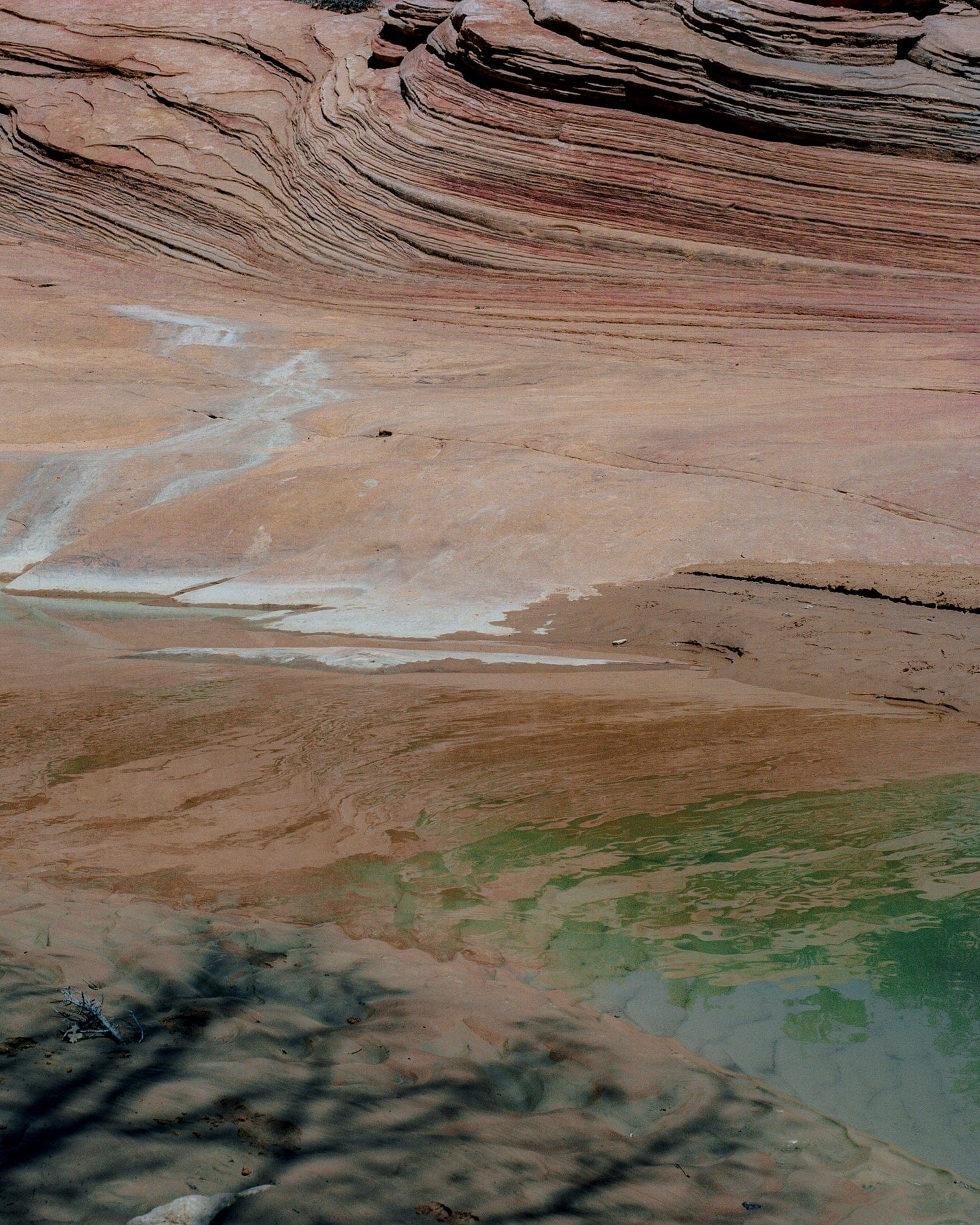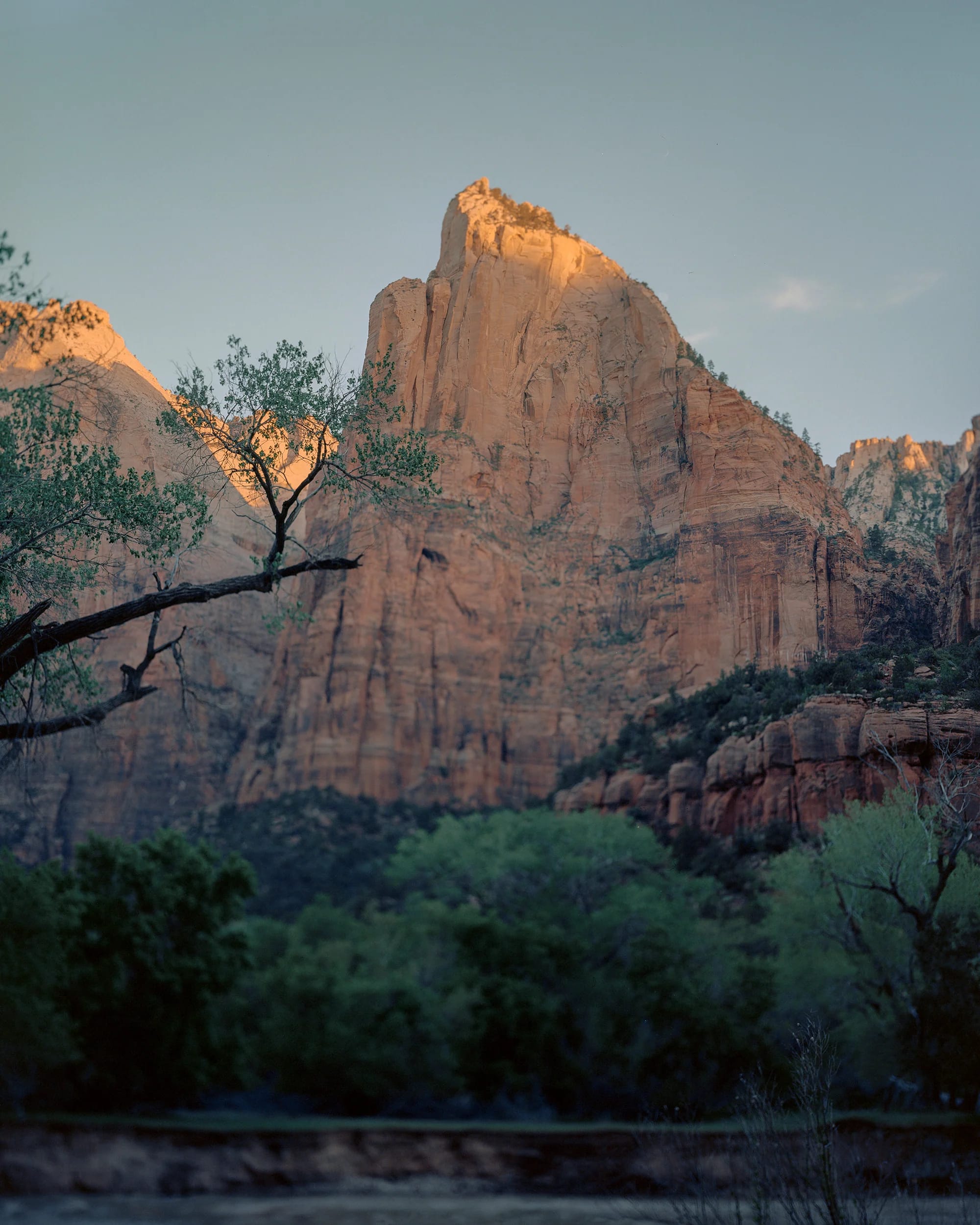Zion National Park's Desert Light and Canyon Cool

Wildsam’s field guide to Zion National Park awakened us to this landscape’s desert grandeur and surprising, lush greenery. We dispatched photographer Chiara Zonca to document the fleeting moments of light, shadow and color that define a Zion experience, using large-format cameras and techniques that evoke the long heritage of American nature photography dating back to the 19th Century. To accompany Chiara’s photos, we asked writer Boyce Upholt to reflect on what photography means in “wild” spaces–both across the history of American conservation, and in today’s image-saturated world.

When photographer Carleton Watkins arrived in Yosemite Valley in 1861, he needed five mules just to carry his gear. One was solely devoted to lugging the components of Watkins’ “dark tent,” since back then photographs had to be developed immediately, on-site.
Such were the difficulties a landscape photographer faced as the art form first emerged. The dawn of the photographic era was also, as it happened, the moment when white settlers were arriving in the American West en masse. The region was among the first in the world to become known not through interpretations–drawings and etchings and the written word–but through the resolute clarity of photography.


In the century and a half since, the genre that Watkins helped invent, wilderness landscape photography, has become intertwined with our national parks, sometimes problematically. To describe all the issues fully would require a different essay; let’s just note that Yosemite, for one, was never empty, despite Watkins’ careful framing. Humans had inhabited and tended the landscape for millennia, and while the specific histories differ, the same is broadly true across our national parks. Humans have lived around Zion, the subject of the large-format photography that this essay accompanies, for at least 12,000 years, and the Paiute Tribe of Utah has an ongoing relationship with lands now defined as a national park.
Watkins’ sepia-tinted photos, which presented a place calm and still and inviting, made for compelling propaganda. The images were especially popular to the east, among city-dwellers who had little hope of seeing the dramatic valley, since the railroads did not yet reach so far.
Distance and difficulty were central to the appeal. Eastern wonders like Niagara Falls had become overrun by tourists; Watkins, by contrast, carefully clipped out any evidence of the long human history in Yosemite. And there was something wondrous in believing that places were empty and might remain so, remote enough to require a true expedition–five mules to take a photograph. Watkins’ photos have been credited with inspiring Abraham Lincoln to turn the land in the valley over to the state of California, seeding the first government-preserved landscape in the world.

Of course, the parks are quite different today than in Watkins’ era. The government has paved roads and installed campgrounds as big as suburban villages, equipped with flush toilets and Coke machines. Photography has become more manageable, too: tucked in our pockets, we all carry a camera light years more powerful than Watkins’ specially built gear.
Dive Deeper
Learn more about Zion with Wildsam’s field guide and discover artistic riches in the American Southwest with our dedicated Photo Almanac.
Indeed, some might complain that it’s all too easy now. In 2018, the tourism board in Jackson Hole, Wyoming, encouraged tourists in Grand Teton National Park to leave their locations untagged on social media. That way, the board figured, people might not cluster in the same few sites.
But you can’t blame our Internet-broken brains for herding us together. Americans bought more than a million snapshot cameras before the 19th century was out; from the beginning, tourists have sought the same few vantages pioneered by the first photographic visitors, though we’ve tended to plant our families’ smiling faces in front of the scenic backdrops. By the 1920s, many national parks were selling professionally made “snapshots” that could be slipped into an album alongside more personal shots, so everyone could ensure they had the right images to show their friends back home.


Don DeLillo satirized such tendencies in his novel White Noise, sending two professors to visit the most photographed barn in America. “We’re not here to capture an image, we’re here to maintain one,” one says. “Being here is a kind of spiritual surrender. We see only what the others see. The thousands who were here in the past, those who will come in the future. We’ve agreed to be part of a collective perception. This literally colors our vision. A religious experience in a way, like all tourism.”

To me, the idea that we might share with one another our visits to our nation’s most gorgeous expanses feels like the makings of a fine religion–or its beginnings, at least. You can set down your phone, after all, once you’ve framed the empty landscape, and walk into the scene.


Still, there is something to be said for making it harder to get the shot. Even now, or perhaps especially now, there’s a place for genres of photography and image-making that intentionally restore some of the challenge that Watkins experienced. That’s the case with Chiara Zonca’s photos of Zion here, shot on large and medium format film on a 4x5 Standard Camera and Hasselblad 500c. And its the case with some of the most truly memorable experiences in nature. Last week, I camped with my dog along a bayou in Louisiana. As the sun melted into the water, I brandished my phone, hoping to show my wife–and the thousand other people who bother to follow me on Instagram–what we were doing.
If I’d had to unload a mule to make the photo happen, I would not have done this. Maybe that would have pushed me to pay more attention to the sensation of water flowing across my feet, or the shape of the birdsong melodies trilling from the trees.








